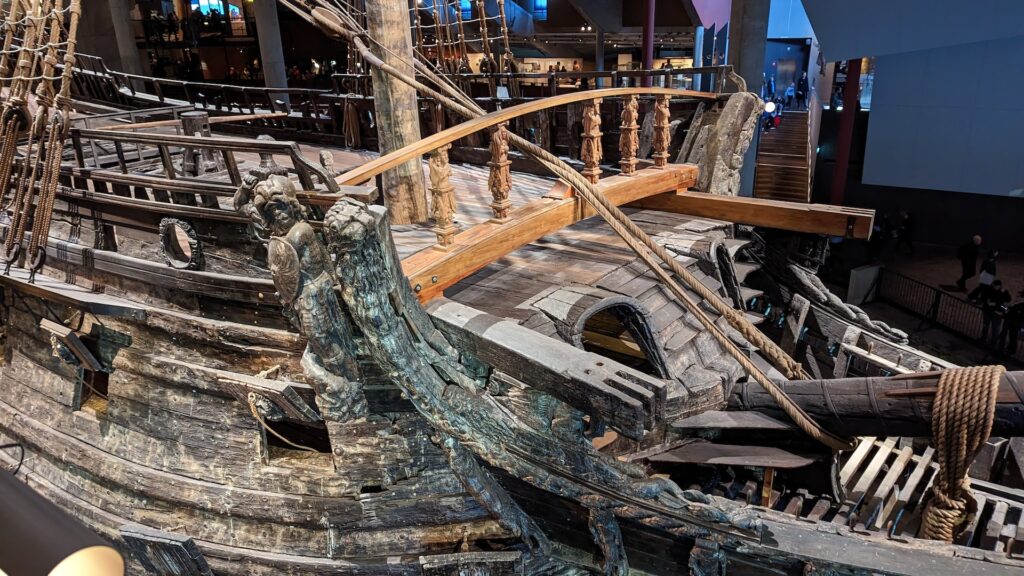The Vasa Ship: History, Myths, and Curiosities of a Maritime Marvel
Unraveling the Stories Behind the Vasa Museum’s Pride and Joy
The Vasa Museum in Stockholm, Sweden, houses one of the most intriguing and well-preserved maritime artifacts in history: the Vasa ship. This 17th-century warship has captured the imagination of millions of visitors since its recovery in 1961, and the museum built around it has become one of the most popular attractions in the Swedish capital. In this article, we’ll explore the fascinating history, curious facts, and enduring myths surrounding this remarkable vessel.
- The Vasa Ship: A Brief History
The Vasa ship was commissioned by King Gustav II Adolf of Sweden in 1626 as part of his ambitious naval expansion plan. Constructed by master shipbuilder Henrik Hybertsson, the ship was intended to be the pride of the Swedish fleet, boasting 64 bronze cannons and decorated with intricate carvings and sculptures.
However, on its maiden voyage on August 10, 1628, the Vasa sank less than a mile from the harbor, taking the lives of at least 30 crew members with it. The ship’s unstable design, coupled with an excess of heavy cannons and decorations, caused it to capsize under the force of a relatively mild gust of wind.
- The Remarkable Preservation of the Vasa Ship
The Vasa lay submerged in Stockholm’s harbor for 333 years before its rediscovery and recovery in 1961. Despite being submerged for centuries, the ship remained incredibly well preserved, with over 95% of its original structure still intact. The Vasa’s preservation can be attributed to the cold, brackish waters of the Baltic Sea and the low levels of wood-eating organisms in the area.
- The Vasa Museum: Showcasing a Maritime Treasure
The Vasa Museum opened in 1990 and has since become one of Stockholm’s most popular attractions. The museum was designed specifically to house the Vasa ship, with a vast, climate-controlled hall showcasing the impressive vessel. The Vasa Museum also features numerous exhibits detailing the ship’s history, construction, and recovery, as well as life in 17th-century Sweden.
- The Mysterious Carvings: Myth and Symbolism
The Vasa ship is adorned with over 500 intricate wooden carvings, many of which have inspired myths and legends. One notable example is the figure of a man with two faces, which some believe represents the Roman god Janus, the god of beginnings and endings. Others argue that it may symbolize the duality of human nature or even allude to the ship’s ill-fated destiny.
- The Vasa Ship’s Ghost: Fact or Fiction?
Over the years, numerous stories have emerged about a ghostly presence aboard the Vasa ship. Some claim that the spirit of a crew member who perished during the sinking still haunts the vessel. These tales have been fueled by reports of strange occurrences within the museum, such as flickering lights and unexplained sounds. While there is no concrete evidence to support these claims, they continue to add to the Vasa’s mystique.
- The Lion’s Roar: The Myth of the Sinking
One enduring myth surrounding the Vasa’s sinking suggests that the ship’s failure was due to a lion figurehead atop the vessel, which was said to have roared before the ship sank. This tale has captivated the imaginations of many and has been passed down through generations.
According to the legend, the lion figurehead was a symbol of strength, courage, and the Swedish monarchy. As the Vasa set sail, the lion roared, causing the ship to capsize and sink almost immediately. Some interpretations of this story assert that the roar was a sign of divine disapproval, with the lion’s roar serving as a warning to King Gustav II Adolf and his subjects. This narrative has been used to emphasize the folly of pride and the importance of heeding divine signs.
Despite the captivating nature of the lion’s roar myth, there is no historical evidence to support this claim. The Vasa’s sinking is now widely attributed to its flawed design and overloading of heavy cannons and decorations, rather than any supernatural intervention. The ship’s instability was a result of a high center of gravity, which made it vulnerable to capsizing under even mild wind conditions.
It is important to note that the figurehead of the Vasa ship was not a lion but rather a representation of a Polish nobleman. This figurehead, like the other intricate carvings on the ship, served as a display of the Swedish monarchy’s power and ambitions. While the lion’s roar myth is an engaging story, it is ultimately just that—a story.
Despite the absence of a lion figurehead, the Vasa ship remains a fascinating testament to the ambitions, artistic prowess, and occasional hubris of 17th-century Sweden. The Vasa Museum continues to attract millions of visitors who are captivated by the ship’s incredible preservation, its detailed carvings, and the many myths and stories that surround it.







